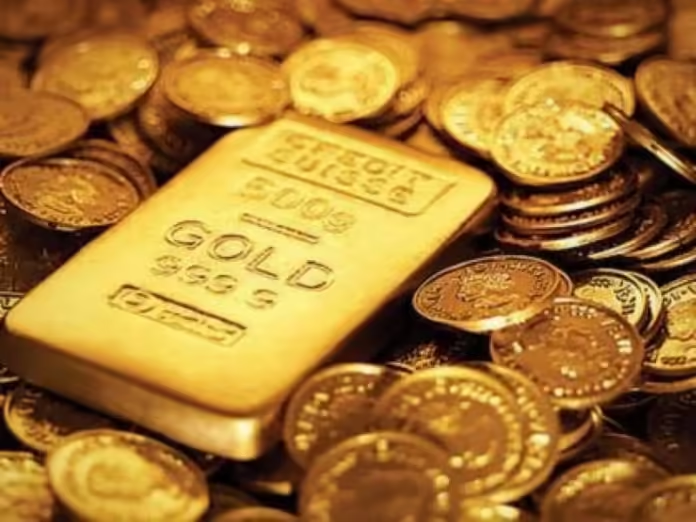Gold prices in Pakistan saw a significant decrease on Friday, reflecting the downturn in international rates. In the local market, the price of gold per tola dropped by Rs2,500, bringing it down to Rs284,700. Similarly, the price for 10 grams of gold decreased by Rs2,144, landing at Rs244,084, according to the All-Pakistan Gems and Jewellers Sarafa Association (APGJSA). Just the day before, on Thursday, gold prices had also declined by Rs700, settling at Rs287,200 per tola.
This fluctuation comes after gold hit an all-time high of Rs287,900 per tola on Wednesday, marking a volatile week in the gold market. The recent decrease has brought relief to buyers but highlights the unpredictable nature of precious metal prices influenced by both local and international trends.
The international gold rate also saw a downturn on Friday, dropping by $25 per ounce. According to APGJSA, the global rate reached $2,752 per ounce, including a $20 premium. This shift affected prices across markets, as gold’s value is largely interconnected worldwide. The decline wasn’t limited to gold; silver prices also dropped by Rs20 to settle at Rs3,430 per tola.
Gold Prices Across Different Countries
Gold prices vary worldwide due to factors like currency exchange rates, import taxes, and local demand. Here’s a quick look at recent gold rates in five major markets:
- USA: In the United States, the price of gold per ounce was around $1,925 on Friday. The U.S. dollar’s strength often directly influences gold prices, as a stronger dollar makes gold more expensive for international buyers.
- India: Gold is a popular investment in India, especially with festive seasons approaching. The rate per 10 grams was approximately INR 60,200, influenced by both international price changes and domestic demand. The Indian gold market is highly sensitive to global rates due to its reliance on imports.
- United Kingdom: Gold prices in the UK were approximately £1,575 per ounce, as the British pound’s fluctuations against the dollar impact gold rates. The UK often serves as a significant market in Europe, with demand for gold as a secure investment amid economic uncertainties.
- China: China, as the largest consumer of gold, saw prices around CNY 438 per gram. Economic factors, such as shifts in the yuan and demand from the manufacturing and jewelry industries, play a crucial role in shaping the gold market in China.
- United Arab Emirates: Gold is especially popular in the UAE for investment and luxury purposes. On Friday, gold was priced around AED 228 per gram, influenced by international rates and demand in the Dubai market.
- Pakistan: After reaching historic highs, gold in Pakistan experienced a notable decrease. The price per tola dropped by Rs2,500, setting it at Rs284,700, while the 10-gram price went down by Rs2,144 to Rs244,084. Local prices are particularly influenced by fluctuations in the international market, exchange rates, and regional demand.
Factors Influencing Gold Prices
Gold prices are impacted by a mix of global and local economic factors, including inflation, currency exchange rates, and geopolitical tensions. Here are some of the key drivers:
- Global Inflation: Rising inflation globally has kept demand for gold high as investors seek safer investment options to protect against the depreciation of fiat currency.
- U.S. Dollar Index: Gold prices are often inversely related to the U.S. dollar. When the dollar strengthens, gold prices usually decrease, and vice versa. The dollar’s recent fluctuations have been a significant influence on gold’s recent performance.
- Central Bank Policies: Decisions by central banks, especially the U.S. Federal Reserve, to raise or lower interest rates directly impact the gold market. Lower interest rates generally support gold prices, as they make other investments, such as bonds, less attractive.
- Geopolitical Tensions: Political uncertainties, wars, and trade issues tend to increase demand for gold, which is seen as a secure store of value during times of crisis.
These factors collectively contribute to the recent trends in the gold market, where local and international prices respond to global economic shifts. As Pakistan’s gold market reacts to international cues, changes in the U.S. dollar, inflation rates, and central bank policies are likely to continue influencing the metal’s value.


